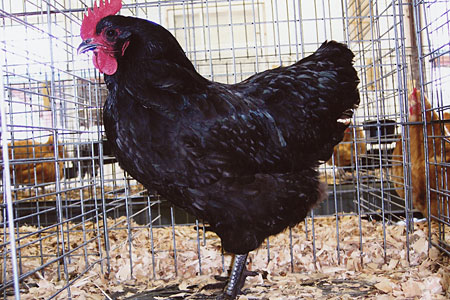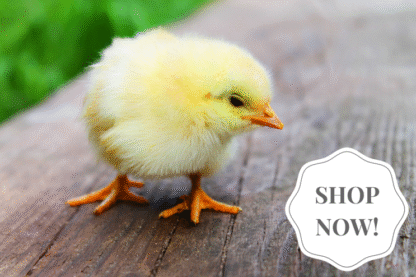
The definition of a standard chicken depends on the context. The term may refer to a large chicken compared to a bantam chicken. Or it may refer to a breed that conforms to its ideal description established by a central organization. Here is a detailed answer to the question, “What are standard chickens?”
What is the difference between bantam and standard chickens?
A bantam is a small chicken. Many bantam breeds are one-fourth or one-fifth the size of their larger counterpart. Some bantam breeds have no large counterpart, and some large breeds have no bantam counterpart.
In this context, then, a standard chicken is one that is bigger than a bantam. In other words, a standard-size chicken.
How many pounds is a standard chicken?
The average weight of a standard-size chicken is about 5.75 pounds. Roosters typically weigh around 7.5 pounds, hens about 5.5 pounds. However, weights vary depending on several factors that include:
• Breed genetics
• Nutritional balance
• State of health
• Living conditions
What are the different sizes of chickens?
Most bantam breeds weigh 2 pounds or less, although some breeds weigh as much as 2.5 pounds. The large breeds weigh anywhere from 4 to 10 pounds.
The large breeds, or in this case “standard” breeds, fall into two groups: light breeds generally weighing 4 to 6 pounds, and heavy breeds weighing 6 to 13 pounds.
What is a standard breed chicken?
A standard breed is one that conforms to its ideal description published by the American Bantam Association (ABA) in the Bantam Standard or the American Poultry Association (APA) in the American Standard of Perfection. Not all existing chicken breeds are standardized by one or both organizations, just the most popular breeds kept in the United States.
What are the standard breed chickens?
APA groups breeds by place of origin: American, Asiatic, English, Mediterranean, and Continental. A sixth classification, “All Other Standard Breeds Class” encompasses Game breeds, Oriental breeds, and miscellaneous breeds — which don’t handily fit into any other classification. The Australorp pictured above is from the English category,
This “All Other” group is the only classification that incorporates the word “standard.” The book’s glossary does not define the word standard, although the introduction states: “The aim of the Association has been to stabilize our economic and commercial breeds to uniform size, shape and color, with good production and practicability; with the provision that ornamental breeds, including the Bantam, be attractive, productive, and meet requirements of the Standard breeder.”
Bantams in the APA Standard fall into five classifications, four of which involve comb style and whether the birds do or do not have feathers on their legs. The fifth classification includes all bantam game breeds. Nowhere does this book imply that the bantams listed are not standard. Their inclusion in this book indicates that their breed characteristics have been standardized, therefore they are standard.
The ABA uses similar classifications. This book defines bantam chickens as “miniature fowl one-fifth to one-fourth of the weight of the large fowl represented, some of which have no large counterpart.” The ABA and APA Standards aren’t always the same, but in recent years both groups have taken steps to reduce confusion by reconciling their differences.
Neither Standard lists all varieties of the breeds they represent. And neither Standard accepts sex links or other hybrids. Both Standards list only pure breeds.
To compete in an APA or ABA sanctioned poultry show, a breed and variety must be listed in one of these Standards. In other words, for exhibition purposes a chicken must be of a standard breed, whether it is a large breed or a bantam.
Not all standards are alike
Standards differ from one country to another. In the United Kingdom, for instance, The Poultry Club of Great Britain publishes the British Poultry Standards. Chicken breeds are classified by weight and according to whether they are hard or soft feathered. Not all of the breeds in the British Standard are common in North America. The reverse is also true.
How many eggs does a standard chicken lay?
No chicken lays more than one egg a day. But exactly how many eggs a chicken lays depends on a number of factors that include:
• Breed — Depending on breed, eggs per year range between a few dozen up to 300.
• Age — Most chickens start laying at 18 to 20 months of age and peak after about two years.
• Nutrition — Laying requires a balanced diet that includes an adequate calcium supplement.
• Health — Hens lay best when free of stress, parasites, and illness.
• Season — Some breeds lay during winter, others take a break when day length shortens.
Helpful Links
- How Many Chicken Breeds Are There?
- What Is a Bantam Chicken?
- 12 Chicken Breeds with the Best Laying Hens
And that’s today’s news from the Cackle Coop.
Gail Damerow has written numerous books about keeping poultry, many of them available from the Cackle Bookstore.

